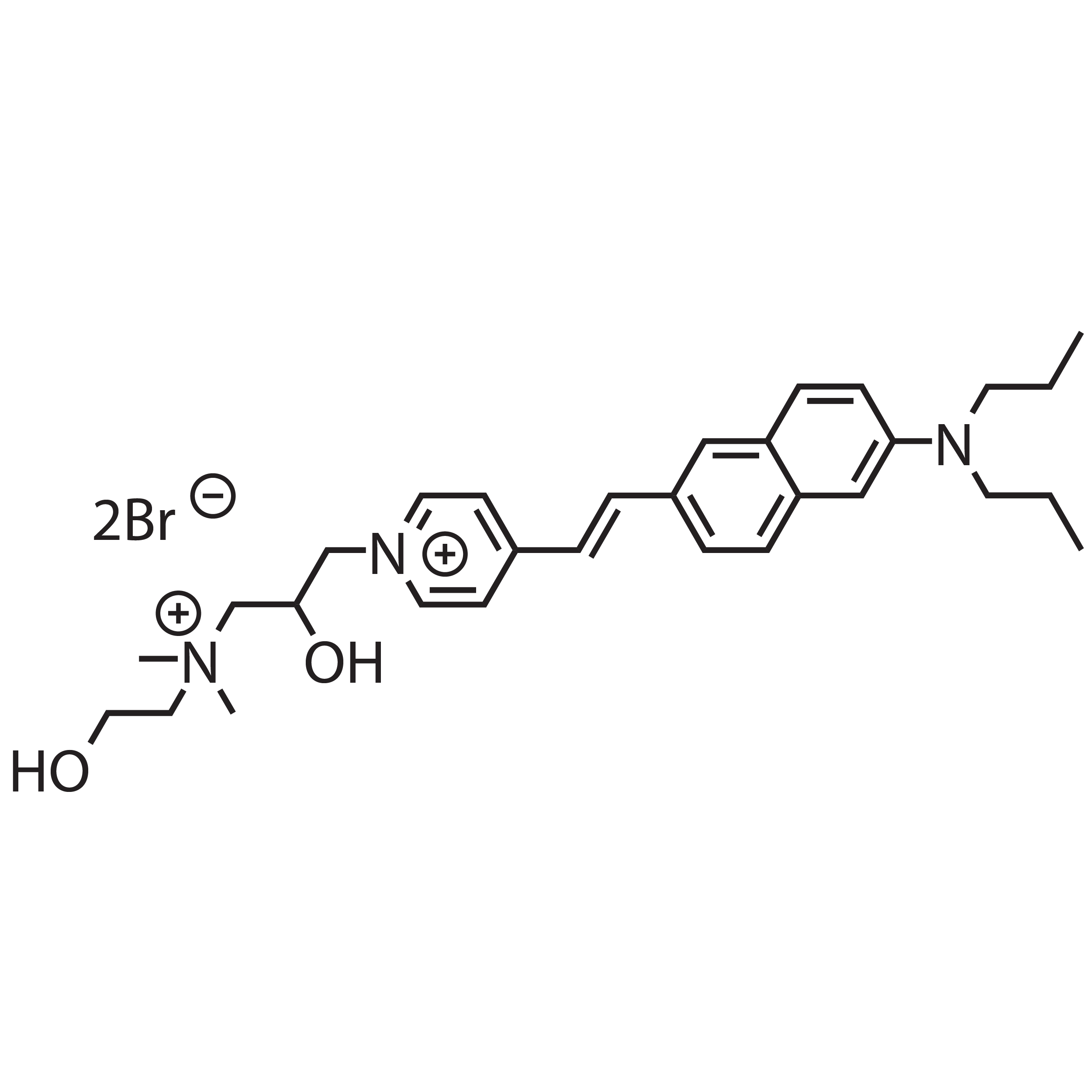Structure and Spectra
Product Details:
Pre-dried aliquots (solid, solvent removed)
Quantity: 100 nmol / tube (64 μg)
2.0-mL free standing polypropylene tubes
Sealed cap
Individually labeled
References
Fisher, J. A. N., J. R. Barchi, C. G. Welle, G.-H. Kim, P. Kosterin, A. L. Obaid, A. G. Yodh, D. Contreras, and B. M. Salzberg. 2008. Two-Photon Excitation of Potentiometric Probes Enables Optical Recording of Action Potentials From Mammalian Nerve Terminals In Situ. J Neurophysiol.. PubMed
Jin, L., A. C. Millard, J. P. Wuskell, X. Dong, D. Wu, H. A. Clark, and L. M. Loew. 2006. Characterization and application of a new optical probe for membrane lipid domains. Biophysical journal. PubMed
Jin, L., A. C. Millard, J. P. Wuskell, H. A. Clark, and L. M. Loew. 2005. Cholesterol-enriched lipid domains can be visualized by di-4-ANEPPDHQ with linear and nonlinear optics. Biophysical journal. PubMed
Obaid, A. L., L. M. Loew, J. P. Wuskell, and B. M. Salzberg. 2004. Novel naphthylstyryl-pyridium potentiometric dyes offer advantages for neural network analysis. J Neurosci Methods. PubMed
Kwiatek, J. M., D. M. Owen, A. Abu-Siniyeh, P. Yan, L. M. Loew, and K. Gaus. 2013. Characterization of a new series of fluorescent probes for imaging membrane order. PLoS ONE. PubMed
Owen, D. M., P. M. P. Lanigan, C. Dunsby, I. Munro, D. Grant, M. A. A. Neil, P. M. W. French, and A. I. Magee. 2006. Fluorescence Lifetime Imaging Provides Enhanced Contrast when Imaging the Phase-Sensitive Dye di-4-ANEPPDHQ in Model Membranes and Live Cells. Biophys. J. PubMed



